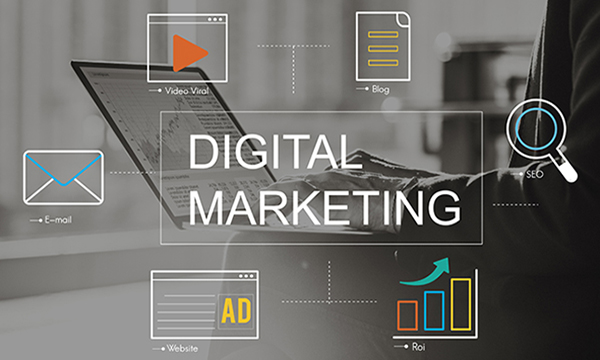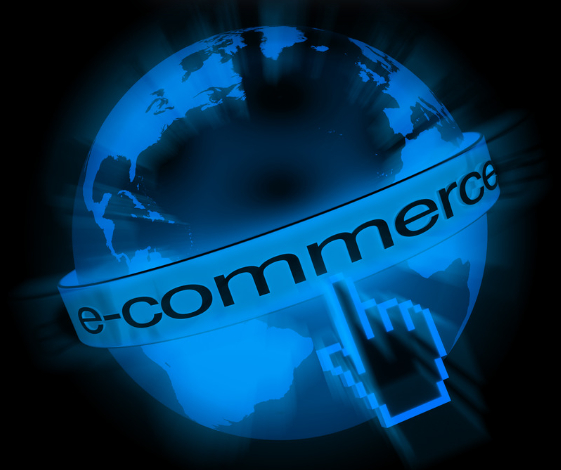Last week, two of our team members at ASTOUNDZ jumped into the grind at the State of Search SEO conference in Grapevine, Texas.

Blog Category pages subscription form.

Ecommerce, or electronic commerce, is the buying and selling of goods or services over the internet. It enables businesses to reach customers worldwide, offering convenience and accessibility for both buyers and sellers. Ecommerce platforms like Shopify, WooCommerce, and Magento provide businesses with the tools needed to set up an online store, manage inventory, process payments, and market their products to a global audience.

Last week, two of our team members at ASTOUNDZ jumped into the grind at the State of Search SEO conference in Grapevine, Texas.

If your keyword rankings or SEMrush reports suddenly dropped in September, you weren’t alone.

In today's digital world, it's more important than ever for businesses to stand out online. One of the best ways to do this is through paid search. But what exactly does that mean? Paid search is when businesses pay for their ads to appear at the top or bottom of...

AI is changing the way brands connect with people. In digital marketing, AI helps businesses make smarter decisions by understanding customer behavior, creating personalized content, and automating tasks. Let's take a closer look at how AI is shaping the future of...

Website development is changing fast! New technologies are popping up all the time, and they're making websites more powerful, interactive, and user-friendly. In this article, we're going to explore the cool emerging technologies that are shaping web development today...

In today's digital world, the way we access websites has changed drastically. People are spending more time on their smartphones than ever before, and businesses need to keep up with this shift. Mobile-first design is the solution. This approach focuses on creating...

Social media ads are a game-changer for businesses today, offering a world of potential. With billions of people using social media every day, platforms like Facebook, Instagram, TikTok, and LinkedIn are more than places to post pictures and updates—they're powerful...

In today's fast-paced digital world, online shopping is more popular than ever. As e-commerce continues to grow, new technologies are shaping the way we search for products and make purchases. One of the most exciting developments is voice search optimization. More...

In the ever-evolving world of digital marketing, Search Engine Optimization (SEO) continues to play a pivotal role in driving online visibility, traffic, and conversions. As we move into 2025, SEO remains at the core of online marketing strategies, but its landscape...

In today's fast-paced digital world, businesses need creative and effective ways to get noticed. With so much competition online, it can be hard for a brand to stand out. This is where display advertising comes in. If you're looking to reach a wider audience, digital...

Ecommerce began in the 1990s with the launch of platforms like Amazon and eBay, transforming the way people buy and sell products. As internet adoption grew, ecommerce expanded into new markets, introducing secure online payment systems and sophisticated shopping experiences. Today, mobile commerce (m-commerce) and social commerce allow customers to shop from their smartphones or directly through social media platforms, making ecommerce a cornerstone of the modern retail industry.
Ecommerce:
The buying and selling of goods or services over the internet through online platforms
Online Store:
A website where businesses sell products or services directly to customers.
Shopping Cart:
An online feature that allows customers to select and save products they wish to purchase.
Payment Gateway:
A service that processes credit card payments for online transactions securely.
B2B Ecommerce (Business-to-Business):
Online transactions conducted between businesses, such as wholesale suppliers and retailers.
B2C Ecommerce (Business-to-Consumer):
Online transactions where businesses sell directly to consumers.
M-Commerce (Mobile Commerce):
Shopping transactions conducted through mobile devices like smartphones and tablets.
Dropshipping:
An ecommerce model where businesses sell products without holding inventory, relying on suppliers to ship products directly to customers.
Fulfillment:
The process of packaging, shipping, and delivering products to customers.
Product Listing:
A page on an ecommerce site that displays information about a specific product, including price, description, and images.
Cross-Selling:
Recommending related products to customers during their shopping experience to increase sales.
Upselling:
Encouraging customers to purchase a higher-end product or add-ons.
Conversion Rate:
The percentage of website visitors who complete a desired action, such as making a purchase.
Customer Retention:
Strategies used to keep existing customers coming back to shop again.
Inventory Management:
Tracking and managing stock levels to ensure products are available for sale.
Shipping Integration:
Connecting ecommerce platforms with shipping carriers to automate the shipping process.
SEO (Search Engine Optimization):
Techniques used to improve a website’s visibility in search engine results, driving organic traffic to an ecommerce store.
Digital Wallet:
An online payment tool that stores payment information for easy transactions, such as Apple Pay or Google Wallet.
Cart Abandonment:
When a customer adds items to their shopping cart but leaves the site without completing the purchase.
Checkout Process:
The steps a customer goes through to complete their purchase, including payment and shipping details.
Customer Support:
Assistance provided to customers before, during, and after a purchase to ensure a positive shopping experience.
Analytics:
Data collected about website performance, customer behavior, and sales, used to optimize ecommerce strategies.
Product Catalog:
A collection of product listings available for customers to browse and purchase.
Responsive Design:
A website design that adjusts to different screen sizes, providing a good user experience on mobile, tablet, and desktop devices.
SSL Certificate:
A security feature that encrypts data transferred between a customer and a website, protecting sensitive information.
Order Management System (OMS):
Software that helps businesses track orders from placement to delivery.
Customer Reviews:
Feedback left by customers about their shopping experience or the products they purchased.
Referral Program:
A marketing strategy that rewards customers for referring new buyers to the ecommerce store.
Omnichannel:
A seamless approach to customer experience that integrates multiple sales channels, such as online, mobile, and in-store.
Email Marketing:
Using email campaigns to communicate with customers, promote products, and drive sales.
Landing Page:
A standalone web page designed to convert visitors into customers, often used for promotions.
Discount Codes:
Coupons or codes that offer customers a discount on their purchases.
A/B Testing:
Comparing two versions of a webpage or app to see which performs better for conversions.
Warehouse Management:
The process of storing, organizing, and managing inventory in a warehouse for ecommerce businesses.
Social Commerce:
The use of social media platforms like Instagram and Facebook to sell products directly through posts or ads.
Shipping Carrier:
A company responsible for transporting goods from the seller to the customer, such as FedEx, UPS, or USPS.
Return Policy:
The guidelines for returning products purchased from an ecommerce store, often displayed on the website.
Live Chat:
A feature that allows customers to communicate with customer support representatives in real time.
Automated Email:
Emails triggered by customer actions, such as order confirmations or cart abandonment reminders.
Warehouse Management System (WMS):
Software that manages the daily operations of a warehouse, including inventory tracking and order fulfillment.
Customer Experience (CX):
The overall experience a customer has with a brand, from browsing the website to receiving their purchase.
Loyalty Program:
A rewards program that incentivizes repeat purchases and builds customer loyalty.
Shipping Label:
A label that contains all necessary information for shipping a package, including destination and tracking number.
Personalization:
Tailoring the shopping experience based on customer data, such as showing recommended products.
Gift Cards:
Prepaid cards that customers can use as a form of payment on an ecommerce website.
Product Photography:
High-quality images used to showcase products on an online store.
Affiliate Marketing:
A program where affiliates earn a commission for driving sales to an ecommerce store through their referrals.
Payment Processor:
A company that manages credit card transactions between a customer and a merchant.
Fraud Prevention:
Measures taken to prevent fraudulent transactions, such as identity verification and secure payment methods.